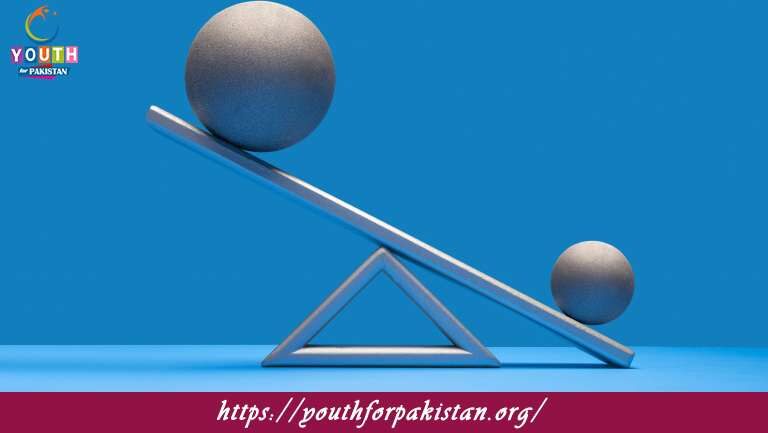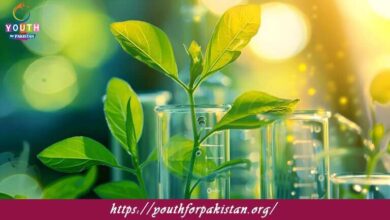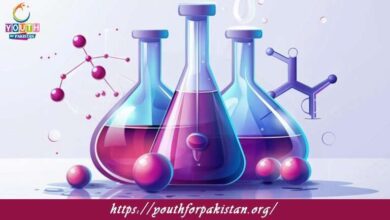10th Class Biology Chapter 11 MCQs with Answers

Master the concept of homeostasis with these carefully curated 10th Class Biology MCQs. From thermoregulation and osmoregulation to feedback mechanisms, these questions help you understand how organisms maintain internal stability. Featuring trending keywords like “homeostasis multiple-choice questions” and “biology quizzes for 10th class,” this resource is a must-have for your study toolkit.
What is homeostasis?
a) The ability to maintain a stable internal environment
b) The process of cell division
c) The movement of substances across a cell membrane
d) The breakdown of glucose to produce energy
Which organ is primarily responsible for maintaining homeostasis in the body?
a) Liver
b) Heart
c) Kidneys
d) Brain
The regulation of body temperature is an example of:
a) Positive feedback
b) Negative feedback
c) Feedforward control
d) Hormonal control
What is the normal range of blood pH in the human body?
a) 7.0 – 7.5
b) 7.2 – 7.8
c) 7.35 – 7.45
d) 7.5 – 8.0
When blood sugar levels are high, which hormone is released to lower them back to the normal range?
a) Insulin
b) Glucagon
c) Estrogen
d) Testosterone
Which part of the brain plays a key role in regulating body temperature?
a) Cerebrum
b) Cerebellum
c) Hypothalamus
d) Medulla oblongata
What is the process by which water and dissolved substances are removed from the blood and converted into urine?
a) Osmosis
b) Filtration
c) Digestion
d) Absorption
The hormone ADH (antidiuretic hormone) is responsible for:
a) Increasing blood sugar levels
b) Decreasing blood pressure
c) Regulating water reabsorption in the kidneys
d) Controlling body temperature
Sweating in response to an increase in body temperature is an example of:
a) Positive feedback
b) Negative feedback
c) Feedforward control
d) Hormonal control
Which of the following is NOT a component of a feedback loop in homeostasis?
a) Stimulus
b) Receptor
c) Control center
d) Effector
When blood sugar levels are low, which hormone is released to raise them back to the normal range?
a) Insulin
b) Glucagon
c) Estrogen
d) Testosterone
The conversion of glucose into glycogen is an example of:
a) Catabolism
b) Anabolism
c) Osmosis
d) Diffusion
Which of the following is responsible for detecting changes in the internal environment and sending information to the control center?
a) Receptor
b) Effector
c) Stimulus
d) Control center
The release of insulin to lower blood sugar levels is an example of:
a) Positive feedback
b) Negative feedback
c) Feedforward control
d) Hormonal control
Which organ is responsible for removing waste products and excess substances from the blood to maintain homeostasis?
a) Liver
b) Lungs
c) Skin
d) Kidneys
The release of adrenaline in response to stress is an example of:
a) Positive feedback
b) Negative feedback
c) Feedforward control
d) Hormonal control
Which hormone is responsible for regulating the body’s metabolism and energy
production?
a) Insulin
b) Thyroxine
c) Glucagon
d) Estrogen
The release of oxytocin during childbirth to enhance uterine contractions is an example of:
a) Positive feedback
b) Negative feedback
c) Feedforward control
d) Hormonal control
Which of the following is NOT an example of homeostasis?
a) Regulation of body temperature
b) Regulation of blood glucose levels
c) Regulation of heart rate during exercise
d) Regulation of cell division
What is the primary role of sweat in maintaining homeostasis?
a) Regulating body temperature
b) Regulating blood sugar levels
c) Regulating blood pressure
d) Regulating blood pH
The hormone responsible for regulating calcium levels in the blood is:
a) Insulin
b) Thyroxine
c) Calcitonin
d) Glucagon
Which part of the brain controls the release of hormones by the pituitary gland?
a) Cerebrum
b) Hypothalamus
c) Medulla oblongata
d) Thalamus
The process by which water and dissolved substances move from an area of higher concentration to an area of lower concentration is called:
a) Active transport
b) Osmosis
c) Diffusion
d) Filtration
Which hormone is responsible for regulating blood pressure and fluid balance in the body?
a) Insulin
b) Estrogen
c) Aldosterone
d) Glucagon
The hormone responsible for regulating the body’s response to stress is:
a) Insulin
b) Estrogen
c) Testosterone
d) Cortisol
The regulation of blood glucose levels is an example of:
a) Positive feedback
b) Negative feedback
c) Feedforward control
d) Hormonal control
Which hormone is responsible for promoting the reabsorption of sodium and water by the kidneys to increase blood volume?
a) Insulin
b) Estrogen
c) Aldosterone
d) Glucagon
What is the process by which the body responds to a change in the internal environment before the change actually occurs?
a) Osmosis
b) Filtration
c) Digestion
d) Feedforward control
Which hormone is responsible for stimulating the breakdown of glycogen to release glucose into the blood when blood sugar levels are low?
a) Insulin
b) Glucagon
c) Estrogen
d) Testosterone
What is the role of the pancreas in maintaining blood sugar levels?
a) Producing insulin and glucagon
b) Filtration of blood
c) Regulation of body temperature
d) Regulation of blood pressure
The hormone responsible for promoting the uptake of glucose by cells to lower blood sugar levels is:
a) Insulin
b) Estrogen
c) Cortisol
d) Glucagon
Which part of the brain regulates thirst and hunger, thereby helping to maintain fluid and energy balance?
a) Cerebrum
b) Hypothalamus
c) Medulla oblongata
d) Thalamus
The hormone responsible for stimulating the breakdown of glycogen to release glucose into the blood is:
a) Insulin
b) Estrogen
c) Cortisol
d) Glucagon
Which of the following is NOT a mechanism of temperature regulation in the human body?
a) Sweating
b) Shivering
c) Vasodilation
d) Filtration
The hormone responsible for promoting the reabsorption of water by the kidneys to increase blood volume is:
a) Insulin
b) Estrogen
c) Aldosterone
d) Glucagon
Which hormone is responsible for promoting the breakdown of glycogen to release glucose into the blood when blood sugar levels are low?
a) Insulin
b) Glucagon
c) Estrogen
d) Testosterone
The hormone responsible for promoting the uptake of glucose by cells to lower blood sugar levels is:
a) Insulin
b) Estrogen
c) Cortisol
d) Glucagon
What is the role of the pancreas in maintaining blood sugar levels?
a) Producing insulin and glucagon
b) Filtration of blood
c) Regulation of body temperature
d) Regulation of blood pressure
The hormone responsible for promoting the breakdown of glycogen to release glucose into the blood is:
a) Insulin
b) Estrogen
c) Cortisol
d) Glucagon
Which of the following is NOT a mechanism of temperature regulation in the human body?
a) Sweating
b) Shivering
c) Vasodilation
d) Filtration
The hormone responsible for promoting the reabsorption of water by the kidneys to increase blood volume is:
a) Insulin
b) Estrogen
c) Aldosterone
d) Glucagon
Which hormone is responsible for promoting the breakdown of glycogen to release glucose into the blood when blood sugar levels are low?
a) Insulin
b) Glucagon
c) Estrogen
d) Testosterone
The hormone responsible for promoting the uptake of glucose by cells to lower blood sugar levels is:
a) Insulin
b) Estrogen
c) Cortisol
d) Glucagon
What is the role of the pancreas in maintaining blood sugar levels?
a) Producing insulin and glucagon
b) Filtration of blood
c) Regulation of body temperature
d) Regulation of blood pressure
The hormone responsible for promoting the breakdown of glycogen to release glucose into the blood is:
a) Insulin
b) Estrogen
c) Cortisol
d) Glucagon
Which of the following is NOT a mechanism of temperature regulation in the human body?
a) Sweating
b) Shivering
c) Vasodilation
d) Filtration
The hormone responsible for promoting the reabsorption of water by the kidneys to increase blood volume is:
a) Insulin
b) Estrogen
c) Aldosterone
d) Glucagon
Which hormone is responsible for promoting the breakdown of glycogen to release glucose into the blood when blood sugar levels are low?
a) Insulin
b) Glucagon
c) Estrogen
d) Testosterone
The hormone responsible for promoting the uptake of glucose by cells to lower blood sugar levels is:
a) Insulin
b) Estrogen
c) Cortisol
d) Glucagon
What is the role of the pancreas in maintaining blood sugar levels?
a) Producing insulin and glucagon
b) Filtration of blood
c) Regulation of body temperature
d) Regulation of blood pressure
The hormone responsible for promoting the breakdown of glycogen to release glucose into the blood is:
a) Insulin
b) Estrogen
c) Cortisol
d) Glucagon
Which of the following is NOT a mechanism of temperature regulation in the human body?
a) Sweating
b) Shivering
c) Vasodilation
d) Filtration
The hormone responsible for promoting the reabsorption of water by the kidneys to increase blood volume is:
a) Insulin
b) Estrogen
c) Aldosterone
d) Glucagon
Which hormone is responsible for promoting the breakdown of glycogen to release glucose into the blood when blood sugar levels are low?
a) Insulin
b) Glucagon
c) Estrogen
d) Testosterone
The hormone responsible for promoting the uptake of glucose by cells to lower blood sugar levels is:
a) Insulin
b) Estrogen
c) Cortisol
d) Glucagon
What is the role of the pancreas in maintaining blood sugar levels?
a) Producing insulin and glucagon
b) Filtration of blood
c) Regulation of body temperature
d) Regulation of blood pressure
The hormone responsible for promoting the breakdown of glycogen to release glucose into the blood is:
a) Insulin
b) Estrogen
c) Cortisol
d) Glucagon
Which of the following is NOT a mechanism of temperature regulation in the human body?
a) Sweating
b) Shivering
c) Vasodilation
d) Filtration
The hormone responsible for promoting the reabsorption of water by the kidneys to increase blood volume is:
a) Insulin
b) Estrogen
c) Aldosterone
d) Glucagon
Which hormone is responsible for promoting the breakdown of glycogen to release glucose into the blood when blood sugar levels are low?
a) Insulin
b) Glucagon
c) Estrogen
d) Testosterone
If you are interested to enhance your knowledge regarding Physics, Chemistry, Biology, and Computer please click on the link of each category, you will be redirected to dedicated website for each category.





